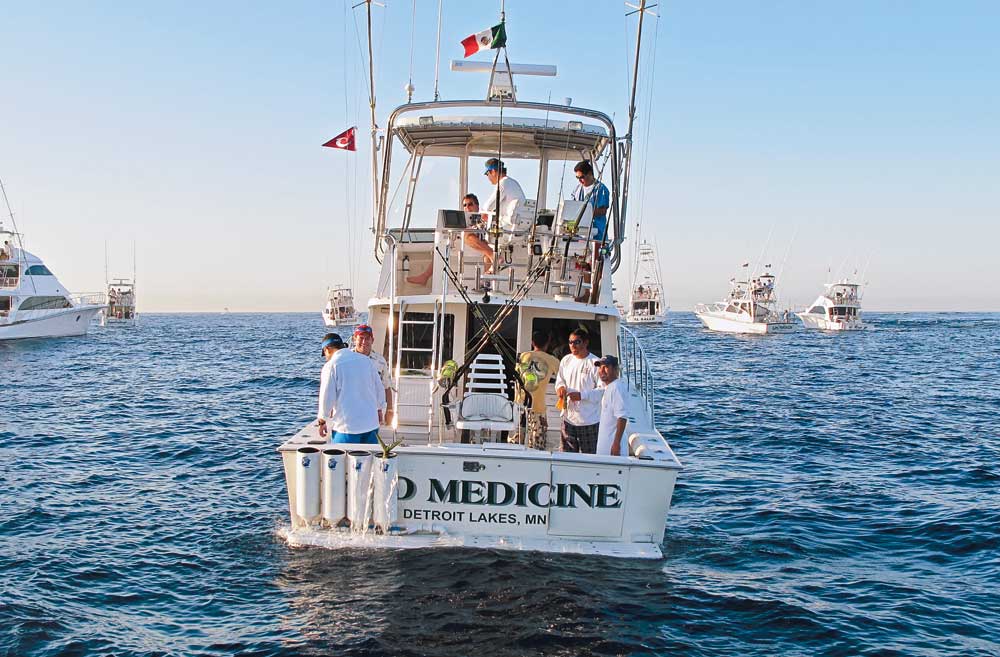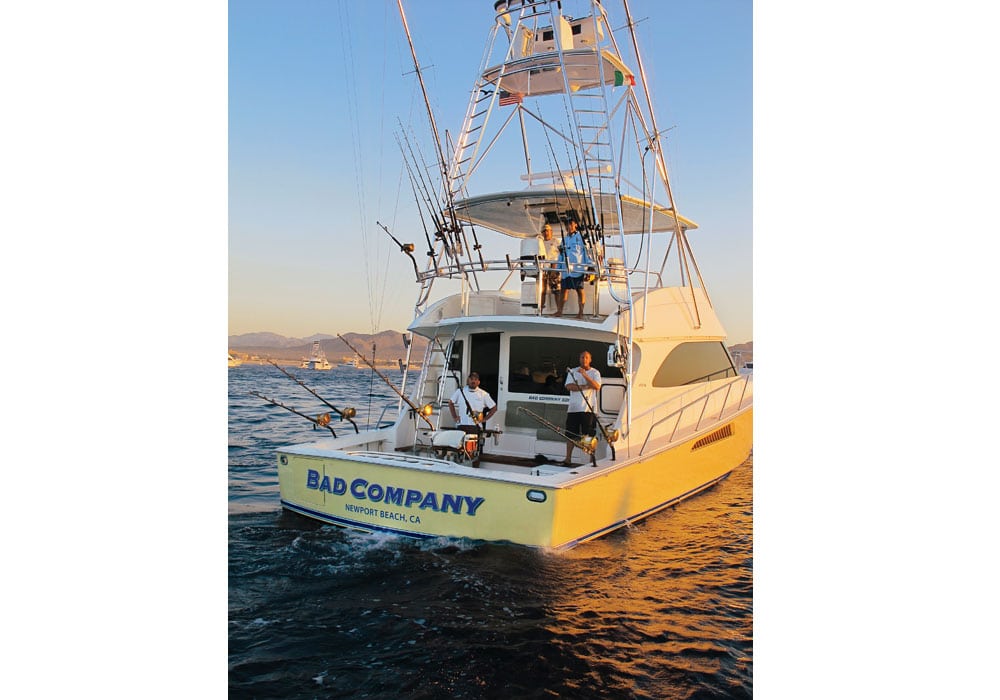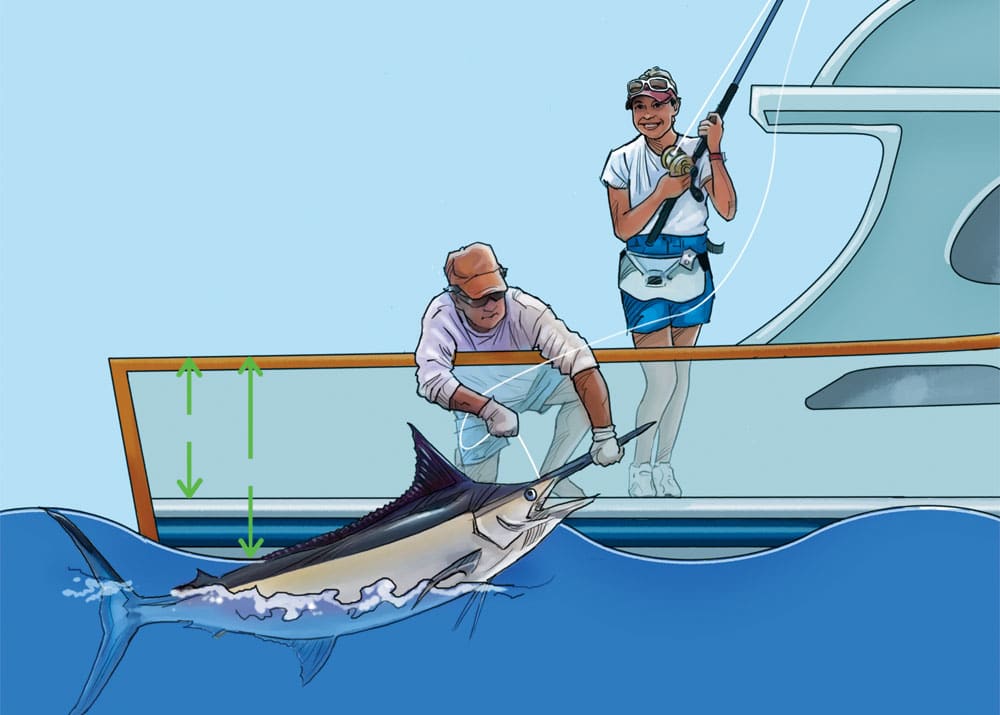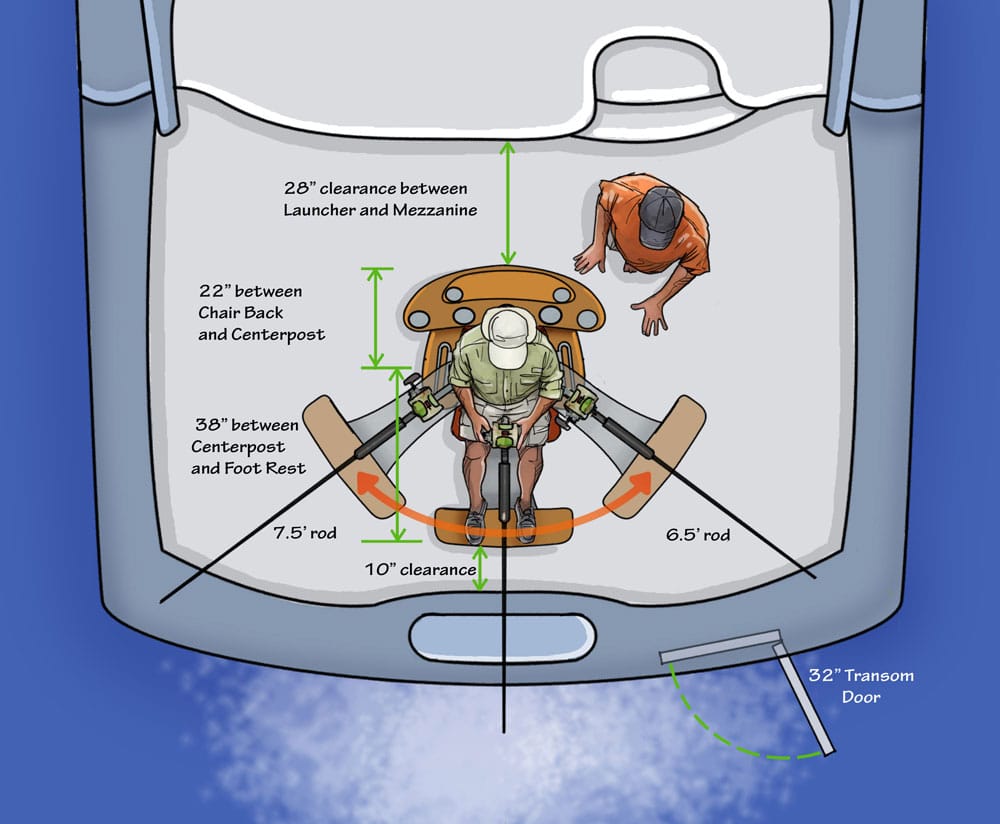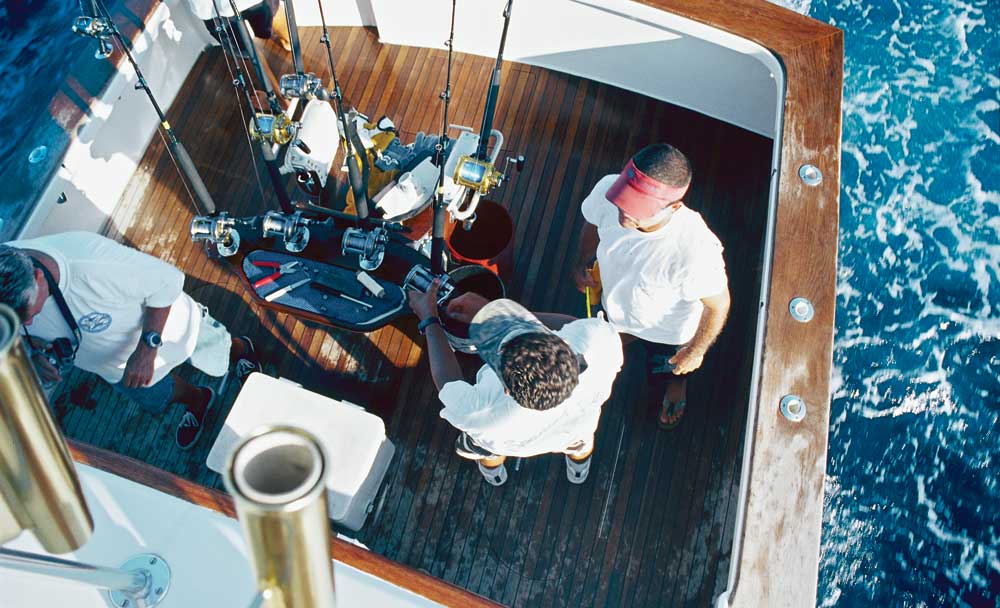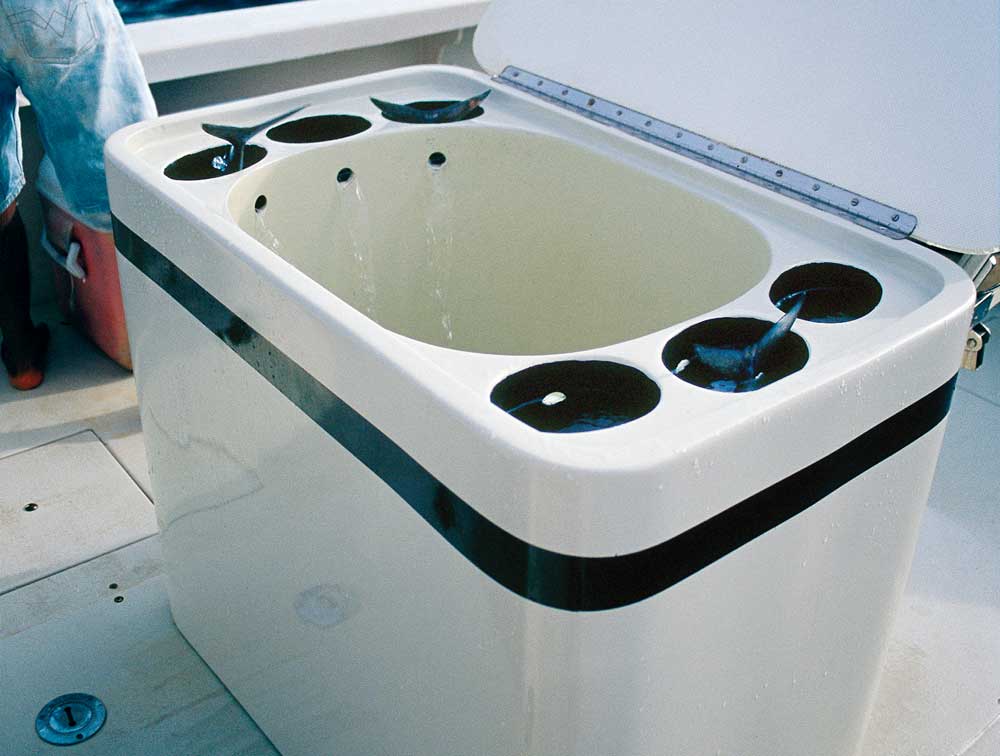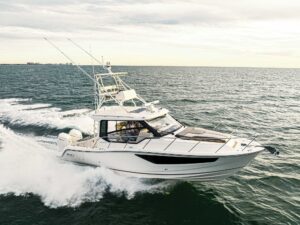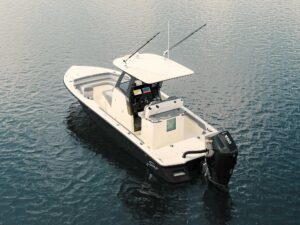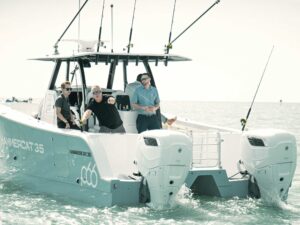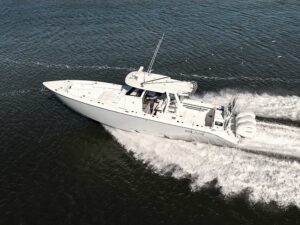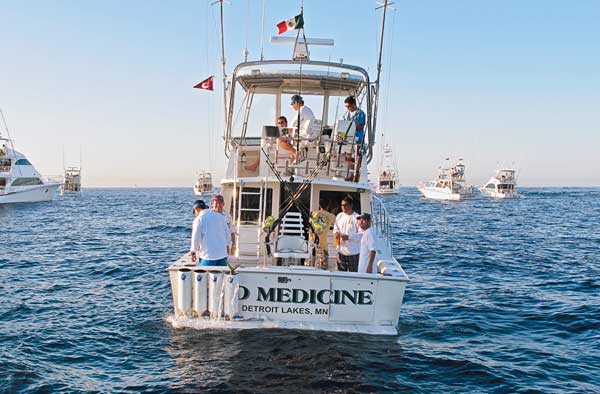
Cockpit main
Indulge in a daydream for a few moments. Imagine winning the Powerball jackpot and pocketing a cool $160 million after taxes. You’ve taken the wife to Hawaii, and bought her a Mercedes-Benz, a diamond necklace and a kitchen Emeril Lagasse would envy. The kids are a lock for Harvard. Time to treat yourself, right? The fishing boat of your dreams awaits. But where exactly do you start?
Obviously, style is the first consideration, plus performance and handling. Yet if money is no object, shouldn’t the cockpit be the focal point? After all, that’s the heart and soul of any serious fishing boat. To help make your task easier, I asked four experts to describe their most important qualifications for the perfect cockpit.
Design
“We customize each boat so we’re able to mix and match popular features,” says Gary Davis of Jarrett Bay Boatworks. “If you see something you like, we can build it to fit your needs. We don’t recommend getting too specialized, however. A more universal design allows greater flexibility for travel or different styles of fishing.”
Davis, who grew up in his grandfather’s North Carolina shop, has spearheaded Jarrett Bay’s new construction projects for the past 14 years. The mezzanine level is the most popular design feature in cockpits now, Davis says. This raised bench that nestles against the salon bulkhead offers several advantages, including observer seating and dedicated storage. In addition, an extended overhang from the flying bridge provides shade and better visibility.
“The mezzanine layout is really a big improvement in cockpit design,” says Capt. Ronnie Fields, skipper on Big Oh, a 63 Scarborough based in Jupiter, Florida. “Our guests can stay back there like they’re sitting on a couch but still easily get to the rods on the strike. You can build in storage compartments and drawers for bait, terminal tackle and tools so your guests don’t have to move. Easy access and clean — with nothing to stub your toes or knees — that’s what I really like.” After beginning his career as a mate at age 15, Fields spent a couple of seasons with the Madam and Wild Hooker globe-trotting mothership operation in Cape Verde, the Azores and St. Thomas, U.S. Virgin Islands.
“A cockpit has to drain quickly too,” Fields adds. “When you’re backing down on a hot fish, that’s important. In St. Thomas, for example, where it can get rough, if the cockpit is slow to drain, you end up with coolers floating around. Then they flip and dump all your rigged baits. That makes for a real mess.”
Ralph Torres, vice president of SeaVee Boats for the past 16 years, agrees. A self-bailing cockpit offers greater safety and easier cleanup, he says. And a single-level deck provides better footing. When he designs a new model, Torres pays special attention to cockpit dimensions. Miami-based SeaVee currently builds five production center console and convertible models ranging from 29 to 43 feet, with outboard- and inboard-power options.
“Freeboard heights are important in terms of handling fish and working the cockpit,” Torres explains. Ideally, the distance from the sole to the top of the gunwale should be 23 to 27 inches. From the waterline to the top of the gunwale in the aft cockpit, the distance should measure between 31 and 35 inches, Torres says. He is also a firm believer in toe kicks for stability. A gunwale that’s the proper height lets you lock your knees under the covering boards during long stand-up battles, and sliding your toes underneath the kicks provides stability and comfort.
Chair vs. Rocket Launcher
Where you fish and how have major bearing on cockpit layout. If your normal waters are the mid-Atlantic coast or Bermuda, where giant bluefin tuna or grander marlin are likely targets, a fighting chair is almost a necessity. If you prefer stand-up tackle, then a rocket-launcher setup allows more maneuvering room. A combination chair/rocket launcher is a popular compromise.
“Fighting chairs adjust to fit different-size anglers,” explains Sam Peters, owner of Release Marine. “For the average man, the chair footrest extends 36 to 38 inches, with 2 inches between notches. So to allow enough room, the chair center should be mounted 48 to 50 inches away from the inside edge of the transom covering boards. If the boat’s beam is less than 15 feet, a straight pedestal will work. But if it’s 15 feet, 2 inches or wider, an offset pedestal becomes necessary. That way, if someone’s using a 7-foot-6-inch rod, the tip extends beyond the covering boards so the line never touches. That also allows clearance in front for the wire man and room behind for the mate to pivot the chair without tripping over the mezzanine deck.”
Bait-and-Catch Systems
Even if you troll only lures or dead baits, installing at least one good-size livewell isn’t a bad decision. For live-bait fanatics, multiple wells of different sizes are a must. And a healthy flow of water through all the wells is absolutely essential. Keeping baits frisky was one of Capt. Steve Lassley’s primary objectives when planning Bad Company’s cockpit.
“Our strength is live-baiting, and I helped design all the bait systems and tanks for this model,” he explains. “Everything is balanced. The tanks hold 100 gallons each and will keep tunas alive for up to 50 hours. We have tubes of different sizes that are all interchangeable. Each well is plumbed with two separate 2-horsepower pumps with a manifold system. Hopefully we figure out what the fish are feeding on beforehand, but whatever they’re biting — skipjacks, yellowfin tuna, frigate mackerel — we can carry it and be ready.”
SeaVee likes to offer multiple livewell options for separating different kinds of bait and convenient access, Torres explains. Davis recommends transom or above-deck wells to avoid having to get on your knees when netting those last remaining baits. Well interiors should always be curved so the baits can swim without bumping into corners. A light-blue finish also keeps the baits calmer. Pressurized systems prevent the water from sloshing while under way, and plexiglass lids or windows in the tank allow quick monitoring.
The mezzanine option typically includes insulated or refrigerated compartments to hold rigged baits for quick access. Different-size compartments accommodate bulky rigs like dredges or teasers. Fields prefers insulated instead of refrigerated compartments to minimize maintenance but suggests the ice-maker outflow be located in the cockpit.
Multiple kill boxes of various capacities allow more flexibility. There’s no need to ice down a 100-gallon box when your catch is a dozen yellowtails. When you do stick that trophy wahoo, though, you’ll want to chill it immediately. The largest boxes should have a capacity of 150 gallons and be at least 51/2 feet long. Thick insulation is a must, and removable dividers are handy too. Ideally, all fish boxes should drain overboard or at least be macerated to minimize the mess and clogging. Placement is a matter of personal preference, Davis says. Transom boxes are more accessible, but it’s often easier to drop a hot dolphin into a deck box. Don’t forget cleanup chores when deciding on box location — or weight and balance issues either.
Storage
A fishing boat can never have enough storage, and the ideal cockpit shouldn’t skimp either. Davis strives for easy access to routine items like crimpers, scissors, terminal tackle and leaders. Side cabinets are handy receptacles for gaffs and tag sticks. The end of the mezzanine, where these items are out of the way yet accessible, is a user-friendly option.
A built-in tackle center with a dedicated bait-preparation area, including a sink, is especially useful. It should be strategically located, with close access to both saltwater and freshwater washdowns. Hose-coil trays keep things orderly. To maximize organization, the center should have multiple-size drawers and racks for tackle trays. Don’t forget to include slide stops to prevent spills.
Rod-storage and -holder placement also deserve thoughtful consideration. Torres recommends lockable cabinets where extra rods can be stowed during fishing or safely secured at night. When sailfishing, Fields runs the trolling rods from the rocket launcher, and keeps spares rigged for schooling fish. Portable tubes with suction cups hold pitch baits. He keeps the bent-butt dredge rod in a straight holder next to the pilothouse so that it remains reachable yet out of the way.
Odds and Ends
If your float plan routinely includes kite-fishing or deep-dropping, Torres recommends adding plenty of electrical outlets to the cockpit. A built-in drink cooler that’s handy yet unobtrusive is always appreciated. So is flush-mounted hardware to avoid snags and trip hazards. He believes in an aggressive nonskid deck finish to provide sure traction in wet conditions.
Davis and Fields are both big fans of teak for the cockpit deck and covering boards. Besides adding a classy finish, teak offers sure footing without too much added maintenance, Davis says. Teak is also softer than fiberglass and cuts down on glare, and those two traits give the crew an advantage in spotting fish quicker and staying fresh.
Finally, make sure your cockpit has a big enough transom door. Davis says bigger is always better if there’s room, but the width shouldn’t be less than 32 inches.
Like beauty, the perfect cockpit is in the eye of the beholder. Before you start laying out yours, make a checklist of features that best suit your fishing style. Keep simplicity and accessibility at the top of the list. You can’t take your money with you, so you might as well splurge while you can.
